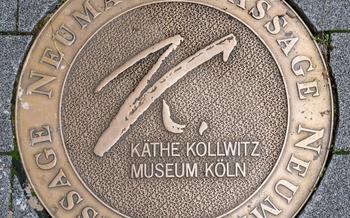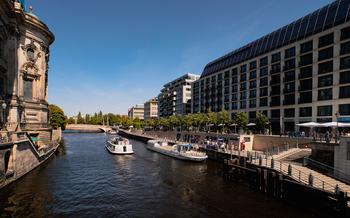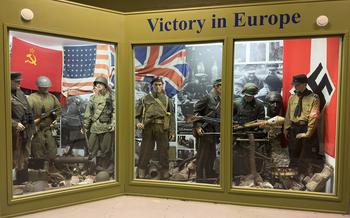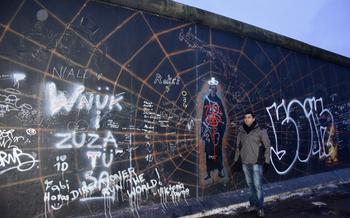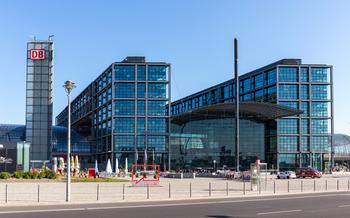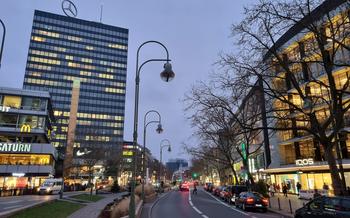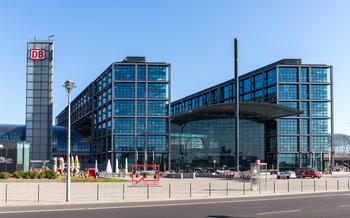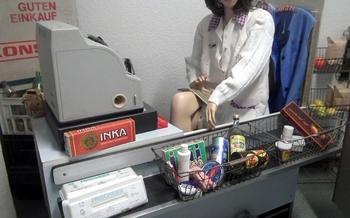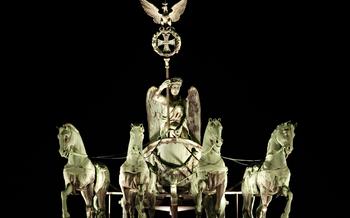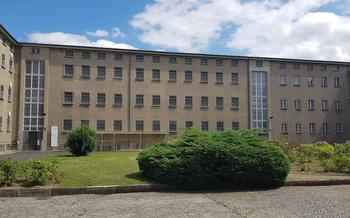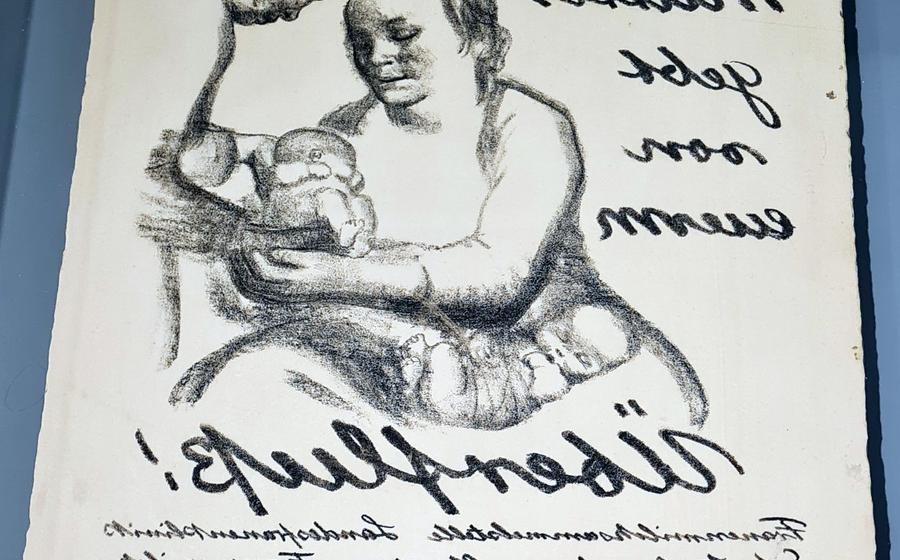
The Käthe Kollwitz Museum
- The Käthe Kollwitz Museum: An Overview
- Käthe Kollwitz: A Masterful Artist
- Permanent Collection: Masterpieces by Käthe Kollwitz
- Temporary Exhibitions: Exploring Diverse Themes
- Educational Programs and Workshops: Fostering Creativity and Engagement
- Research and Conservation: Preserving Kollwitz's Legacy
- Museum Shop and Publications
- Architecture and Design: A Modernist Masterpiece
- Interactive Displays and Multimedia: Engaging with Kollwitz's Art
- Accessibility and Inclusivity: Welcoming All Visitors
- Special Events and Programs: Connecting with the Community
- Nearby Attractions: Expanding Your Berlin Experience
The Käthe Kollwitz Museum: An Overview
The Käthe Kollwitz Museum, located in the vibrant Prenzlauer Berg district of Berlin, Germany, is dedicated to preserving and showcasing the remarkable artistic legacy of Käthe Kollwitz, one of the most influential German artists of the 20th century. Founded in 1986, the museum houses an impressive collection of Kollwitz's prints, drawings, and sculptures, providing visitors with an intimate glimpse into her powerful and moving artworks.
Conveniently situated near public transportation, the museum is easily accessible to visitors. Admission fees are reasonable, and the museum offers free entrance to visitors under 18 years old. Operating hours are from Tuesday to Sunday, allowing for flexible visit times. Guided tours are available in German and English, offering in-depth insights into Kollwitz's life and work. Special events, such as lectures, workshops, and exhibitions, are regularly held at the museum, providing a dynamic and engaging experience for visitors.
Käthe Kollwitz: A Masterful Artist
Käthe Kollwitz (1867-1945) stands as one of Germany's most influential and celebrated artists. Born in Königsberg, East Prussia, Kollwitz's childhood experiences of poverty and social injustice deeply impacted her artistic perspective. She studied art in Berlin and Munich, honing her skills in drawing, printmaking, and sculpture.
Kollwitz's artistic style is characterized by its emotional intensity and social realism. Her work often depicts the suffering and struggles of the working class, as well as the profound impact of war and political oppression. Through her powerful and evocative imagery, Kollwitz sought to raise awareness of social issues and promote empathy and compassion.
Kollwitz's most famous works include "The Weavers' Uprising" (1897-98), a series of prints depicting the plight of striking textile workers, and "Mother with Her Dead Son" (1903), a poignant sculpture expressing the grief of a mother who has lost her child. These works, among many others, have earned Kollwitz international recognition and acclaim as a master of modern art.
Her legacy extends beyond her artistic achievements. Kollwitz was also a vocal advocate for social justice and women's rights. Her unwavering commitment to using her art as a tool for social change continues to inspire generations of artists and activists worldwide. Today, Käthe Kollwitz is hailed as one of the most important and influential figures in German art history.
Permanent Collection: Masterpieces by Käthe Kollwitz
The permanent collection of the Käthe Kollwitz Museum is a treasure trove of the artist's most renowned works, showcasing her mastery of various artistic techniques and her profound engagement with social and political issues. Among the highlights of the collection are:
-
The Weavers' Uprising: This powerful series of prints, created between 1893 and 1897, depicts the struggles of the Silesian weavers during the 1844 uprising. Kollwitz's stark and expressive lines capture the desperation and resilience of the workers, as well as the brutality of the government's response.
-
Mother with Her Dead Son: Created in 1903, this sculpture is a poignant tribute to the suffering of mothers who lost their sons in war. The raw emotion and anguish conveyed through the mother's embrace of her dead son's body have made this work one of Kollwitz's most iconic and universally recognized pieces.
-
Self-Portrait: Throughout her career, Kollwitz created numerous self-portraits, capturing her own aging and the passage of time. These works offer a glimpse into the artist's inner life and her evolving artistic style.
-
War Cycle: Created between 1922 and 1923, the War Cycle is a series of seven prints that depict the horrors and devastation of World War I. Kollwitz's powerful imagery exposes the suffering of both soldiers and civilians, condemning the senselessness of war.
Visitors to the museum can explore these and many other works from Kollwitz's extensive oeuvre, gaining a deeper understanding of her artistic process and her commitment to social justice and human rights.
Temporary Exhibitions: Exploring Diverse Themes
The Käthe Kollwitz Museum regularly presents temporary exhibitions that showcase the artist's work in new and innovative ways. These exhibitions often explore specific themes or periods in Kollwitz's career, placing her work in dialogue with that of other artists or delving into the social and historical contexts that influenced her art.
One notable temporary exhibition, held in 2019, examined Kollwitz's relationship to the city of Berlin. The exhibition, titled "Käthe Kollwitz and Berlin," explored Kollwitz's deep connection to the city, where she lived and worked for most of her life. It featured a selection of her artworks that depicted Berlin's streets, people, and social struggles, offering visitors a unique perspective on the artist's engagement with her urban surroundings.
Another significant temporary exhibition, held in 2021, focused on Kollwitz's response to war. Titled "Käthe Kollwitz and War," the exhibition showcased a series of powerful prints and drawings that depicted the horrors and consequences of war, particularly the First World War. Kollwitz's deeply moving and compassionate portrayal of human suffering during wartime resonated strongly with visitors, highlighting her commitment to social justice and her unwavering belief in the power of art to convey the human experience.
Temporary exhibitions at the Käthe Kollwitz Museum offer visitors the opportunity to explore new perspectives on Kollwitz's work and to engage with her art in a dynamic and thought-provoking way. Through collaborations with contemporary artists and institutions, the museum presents innovative exhibitions that challenge traditional narratives and shed light on Kollwitz's enduring relevance in the contemporary art world.
Educational Programs and Workshops: Fostering Creativity and Engagement
The Käthe Kollwitz Museum offers a comprehensive range of educational programs and workshops designed to foster creativity, encourage artistic expression, and promote a deeper understanding of Käthe Kollwitz's work. These programs cater to visitors of all ages, from school children to adults, and provide hands-on experiences that allow participants to explore Kollwitz's techniques and artistic process.
Art workshops, led by experienced educators, offer participants the opportunity to experiment with various artistic media and techniques, such as printmaking, drawing, and sculpture. Through these workshops, visitors can gain insights into Kollwitz's creative process and develop their own artistic skills.
Lectures and talks by art historians, curators, and artists provide in-depth knowledge about Kollwitz's life, work, and the broader context of her time. These events offer a platform for discussing her artistic style, themes, and influences, encouraging critical thinking and a deeper appreciation of her art.
Educational programs for school groups are tailored to specific age levels and curriculum requirements. These programs include guided tours, interactive activities, and hands-on workshops that engage students with Kollwitz's art and encourage them to explore their own creativity.
The museum's commitment to education extends beyond its walls through outreach programs and collaborations with schools and community organizations. These initiatives aim to bring Kollwitz's art and the museum's resources to a broader audience, promoting art education and fostering a love of art in the community.
Research and Conservation: Preserving Kollwitz's Legacy
The Käthe Kollwitz Museum is dedicated to preserving and celebrating the legacy of this remarkable artist. Ongoing research initiatives delve into Kollwitz's life and work, shedding new light on her artistic process and influences. Scholars from various disciplines collaborate to produce in-depth studies, publications, and exhibitions that contribute to a deeper understanding of Kollwitz's significance in the art world.
In addition to research, the museum actively engages in conservation efforts to ensure the longevity of Kollwitz's artworks. Skilled conservators meticulously restore and preserve her prints, drawings, and sculptures, utilizing state-of-the-art techniques and materials. Through collaboration with experts and institutions, the museum ensures that Kollwitz's legacy remains vibrant and accessible for future generations.
By preserving and studying Kollwitz's work, the museum plays a crucial role in advancing knowledge and appreciation of her artistic achievements. It serves as a hub for scholars, artists, and enthusiasts to engage with her thought-provoking creations and to explore the enduring impact of her art on society.
Museum Shop and Publications
The Käthe Kollwitz Museum offers a well-stocked museum shop where visitors can purchase a variety of items related to the artist and her work. These include books, catalogs, and reproductions of Kollwitz's artwork, as well as posters, postcards, and other souvenirs. The shop also sells a range of merchandise inspired by Kollwitz's art, such as jewelry, scarves, and homeware.
Purchasing items from the museum shop not only supports the museum's mission but also provides visitors with a tangible way to remember their visit and to share Kollwitz's art with others. The shop's friendly and knowledgeable staff is always happy to assist visitors in finding the perfect item, whether they are looking for a gift for a loved one or a special memento for themselves.
Architecture and Design: A Modernist Masterpiece
The Käthe Kollwitz Museum stands as a testament to the fusion of art and architecture. Designed by renowned architect Hans Scharoun in collaboration with Käthe Kollwitz's son, Hans Kollwitz, the building itself is a work of art. Constructed in 1960, it exemplifies the principles of modernism, characterized by its clean lines, geometric forms, and integration with the surrounding landscape.
The museum's exterior features a striking facade of exposed concrete, complemented by large windows that flood the interior with natural light. Inside, visitors are greeted by a spacious and airy atmosphere, with open spaces that flow seamlessly into one another. The interplay of light and shadow, along with the strategic placement of artworks, creates a dynamic and immersive experience for visitors.
Scharoun's design not only showcases Kollwitz's art but also complements it. The clean lines of the architecture provide a neutral backdrop for the powerful and emotive works, allowing them to take center stage. The use of natural light enhances the viewing experience, illuminating the subtle details and nuances of Kollwitz's prints, drawings, and sculptures.
The integration of the museum with its surroundings is another notable aspect of its design. The building is situated in a lush green park, creating a tranquil and contemplative environment for visitors. Sculptures by Kollwitz are placed throughout the garden, inviting visitors to explore and engage with her work in a natural setting.
The Käthe Kollwitz Museum's architecture serves as a fitting tribute to the artist's legacy. The harmonious blend of form and function creates a space that is both aesthetically pleasing and conducive to contemplation and appreciation of Kollwitz's powerful artistic creations.
Interactive Displays and Multimedia: Engaging with Kollwitz's Art
The Käthe Kollwitz Museum embraces technology to enhance visitor engagement and provide a deeper understanding of Kollwitz's art. Interactive displays invite visitors to explore the artist's life, work, and techniques in a hands-on and immersive way. Multimedia presentations offer insights into Kollwitz's artistic process, influences, and the historical context of her work.
Touchscreens and interactive stations allow visitors to zoom in on details of Kollwitz's prints, drawings, and sculptures, revealing hidden symbols and techniques. Virtual reality experiences transport visitors to Kollwitz's time, immersing them in the sights and sounds of Berlin during the early 20th century.
Audio guides, available in multiple languages, provide commentary on selected works, offering historical and artistic context. Visitors can also download a mobile app that offers a self-guided audio tour, allowing them to explore the museum at their own pace.
Through these interactive and multimedia elements, the Käthe Kollwitz Museum creates a dynamic and engaging experience that brings Kollwitz's art to life and makes it accessible to visitors of all ages and backgrounds.
Accessibility and Inclusivity: Welcoming All Visitors
The Käthe Kollwitz Museum is committed to creating an inclusive and accessible environment for all visitors. The museum is wheelchair accessible, with ramps and elevators providing easy access to all levels of the building. Accessible restrooms and designated seating areas are also available.
For visitors with visual impairments, the museum offers tactile models of selected artworks, allowing them to experience the physical forms and textures of Kollwitz's sculptures. Audio descriptions of the collection are available through the museum's audio guide system, providing a rich sensory experience for blind and low-vision visitors.
To accommodate international visitors, the museum provides multilingual audio guides in English, French, Spanish, and German. Signage throughout the museum is also presented in multiple languages, ensuring that visitors from diverse backgrounds can navigate the space and engage with the exhibits.
Educational programs and resources at the Käthe Kollwitz Museum are designed to be inclusive and accessible to a wide range of audiences. Workshops and lectures are offered in both German and English, and materials are available in multiple languages. The museum also collaborates with educational institutions and community organizations to develop programs that cater to the needs of diverse groups, including children, families, and seniors.
By embracing accessibility and inclusivity, the Käthe Kollwitz Museum strives to create a welcoming and engaging environment where visitors from all backgrounds can explore and appreciate the art of Käthe Kollwitz.
Special Events and Programs: Connecting with the Community
The Käthe Kollwitz Museum goes beyond its permanent and temporary exhibitions by hosting a variety of special events and programs that connect with the local community and art enthusiasts alike. These events provide unique opportunities for visitors to engage with contemporary art, learn about Kollwitz's life and work, and foster a sense of community around the museum.
Regular lectures, film screenings, and concerts are held at the museum, featuring renowned artists, scholars, and musicians. These events offer insights into Kollwitz's artistic process, explore themes related to her work, and create a platform for dialogue and discussion.
The museum also collaborates with other cultural institutions, such as theaters, galleries, and universities, to present joint projects and exhibitions. These collaborations bring together diverse perspectives and disciplines, allowing visitors to experience Kollwitz's art in new and unexpected ways.
Through these special events and programs, the Käthe Kollwitz Museum becomes a vibrant hub for cultural exchange and artistic expression. Visitors are invited to participate, learn, and connect with the creative spirit that permeates the museum and its surroundings.
Nearby Attractions: Expanding Your Berlin Experience
Located in the heart of Prenzlauer Berg, the Käthe Kollwitz Museum is surrounded by a wealth of cultural attractions that offer a comprehensive Berlin experience. A short walk from the museum, Mauerpark enchants visitors with its vibrant flea markets, street performers, and beer gardens. This sprawling park is a hub of activity, where locals and tourists alike gather to soak in the lively atmosphere.
Venturing beyond the museum's immediate vicinity, art enthusiasts can explore renowned galleries and museums in the surrounding area. The KW Institute for Contemporary Art, known for its cutting-edge exhibitions, is just a stone's throw away. The Gemäldegalerie, showcasing an impressive collection of Old Master paintings, and the Museum Berggruen, housing masterpieces by Pablo Picasso and Henri Matisse, are also within easy reach.
For those seeking a glimpse into Berlin's rich history, the nearby Stasi Museum provides a sobering insight into the oppressive regime of East Germany. The Kulturbrauerei, a former brewery transformed into a cultural center, offers a mix of art exhibitions, theaters, and cinemas.
With its central location and proximity to these cultural gems, the Käthe Kollwitz Museum serves as an ideal starting point for exploring the diverse offerings of Berlin. Visitors can easily create a comprehensive itinerary that combines art, history, and contemporary culture, ensuring a truly immersive Berlin experience.
